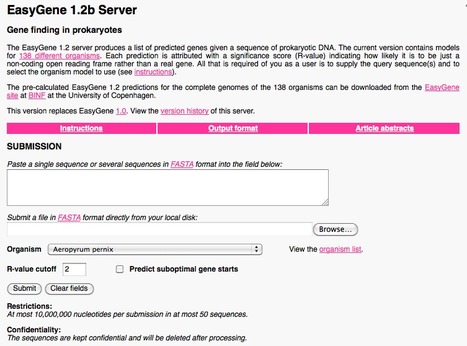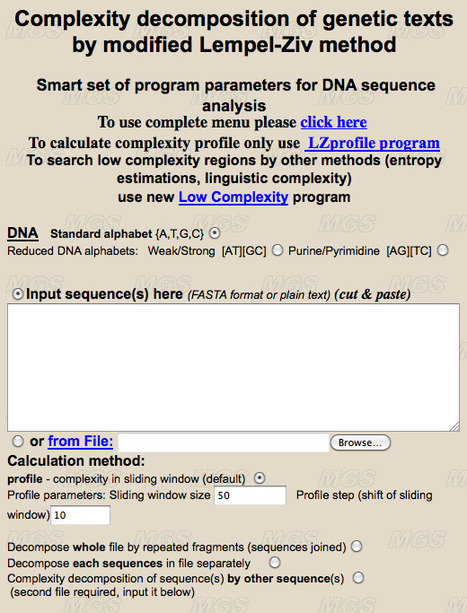AGenDA is a gene-prediction tool that is based on cross-species sequence comparison. The software tools CHAOS and DIALIGN are used to align a pair of syntenic genomic sequences, e.g. from human and mouse. AGenDA searches for conserved splice sites and start/stop codons at the boundaries of identified sequence homologies in order to identify potential exons; these potential exons are then used to assemble entire gene models.
- AGT-SDP Automatic Generated Test-Set Database for Protein-Protein Docking
AGT-SDP (Automatic Generated Test-Set Database for Protein-Protein Docking) provides test cases for evaluating and benchmarking protein-protein docking algorithms.
- AIM Automatic Image processing for Microarrays
Automatic Image processing for Microarrays
- biodomws BioDOM WebService
WebService for the BioDOM Library
- bpr bucket-pointer refinement construction algorithm of suffix arrays
Bpr is an implementation of the 'bucket-pointer refinement' construction algorithm for suffix arrays
- decomp decomp
Suppose you are given a DNA fragment of mass 1897.27 Dalton and no other information. What nucleotide combinations are there that lead to exactly this mass? Decomp helps you solve this and similar problems efficiently.
- GenDB Open Source genome annotation system
The GenDB system is an open source genome annotation system developed at the Center for Genome Research at Bielefeld University.
- libfid Full-text Index Data structure Library
The Full-text Index Data structure library, libfid for short, is a portable software library for accessing indexed data through a simple C interface. It implements, among others, functions for reading indexed data from files, and performing common operations such as fast string matching on these. Easy alphabet handling for mapping between printable and binary alphabets is integrated from the ground up. Currently, the enhanced suffix array is the only full-text index data structure supported. A very simplistic program for constructing enhanced suffix arrays is included. The library is freely available as source code under the terms of the GNU Lesser General Public License
- mkESA Enhanced Suffix Array construction tool
mkESA is an open source program for constructing enhanced suffix arrays (ESAs) from biological sequence data. The program is based on our implementation of Manzini's lightweight Deep-Shallow algorithm, which can also utilize multiple CPUs/cores for some extra speed-up. The generated output is compatible to the output of mkvtree from the Vmatch package written by Stefan Kurtz. mkESA is freely available as source code under the terms of the GNU General Public License
- MoRAine
MoRAine is a tool for the reannotation of transcription factor binding motifs and the creation of sequence logos.
- Paper2Sequence
Simple retrieval of sequences
- PathAligner
Metabolic Pathway Retrieval and Alignment
- Phase4
Automatic evaluation of database search methods.
- stcdb Signal Transduction Classification Database
- Wotd Write-only top-down construction algorithm of suffix trees
Wotd is an implementation of the ''lazy'' write-only top-down construction algorithm of suffix trees using a very space-efficient representation.
- XenDB Xenopus laevis EST database
XenDB is a database of clustered EST and cDNA sequences from Xenopus laevis. ESTs are clustered by a suffix array-based approach and contig sequences compared to proteins from major model organisms. Cross species mapping functionality will be useful for researchers working on comparative genome analysis.
 Your new post is loading...
Your new post is loading...
 Your new post is loading...
Your new post is loading...

















